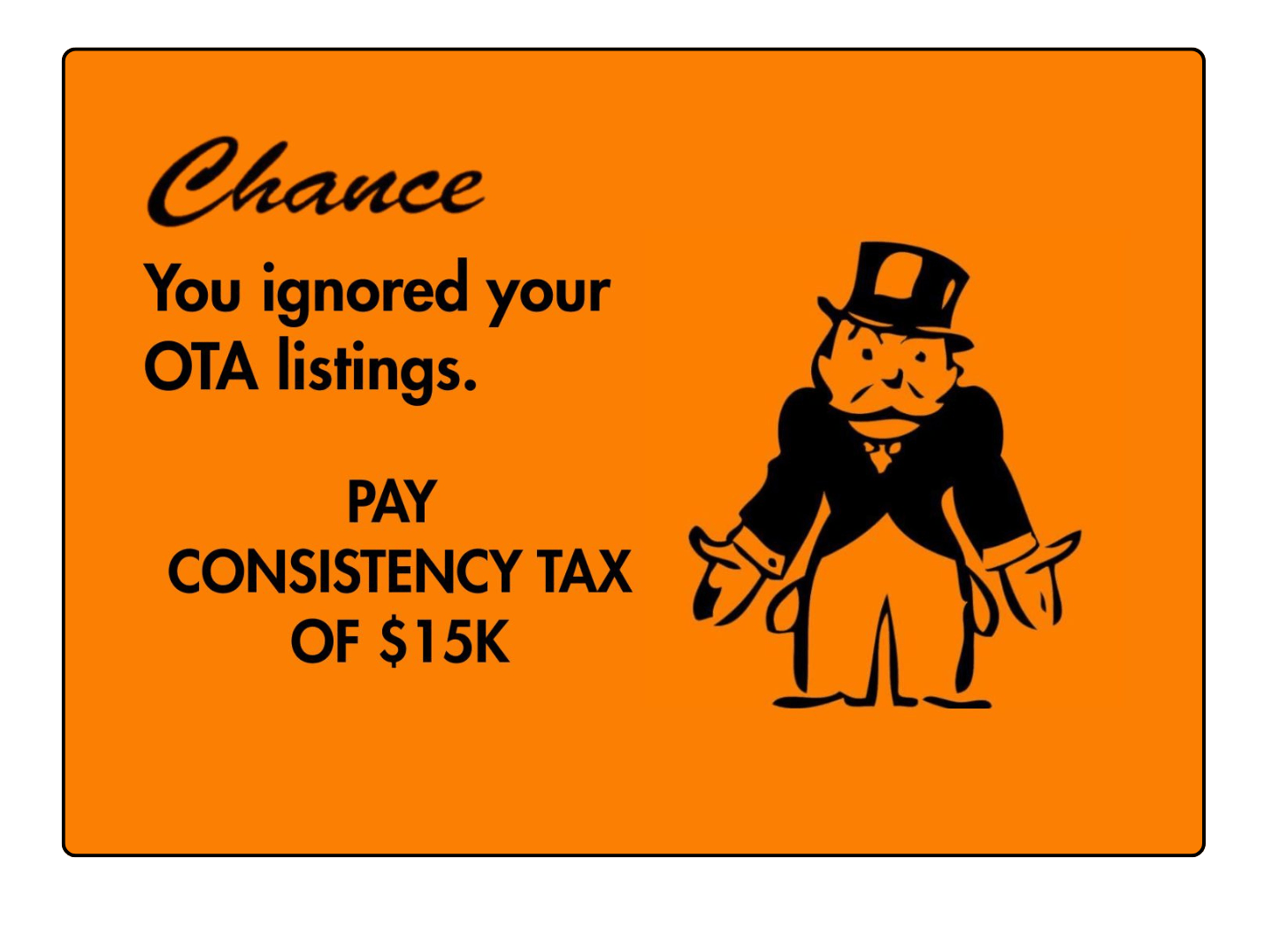Destination Sunday: The Hidden Tax Every Destination Pays (and no one budgets for)
Why alignment, not originality, is the quiet force behind every strong hospitality economy.
Every destination pays taxes.
But there is one cost that never appears in a budget line, never shows up in a council meeting, and never gets flagged by accounting software.
It drains conversion.
It creates friction.
It erodes trust.
And everyone pays it.
We call it the Consistency Tax.
DMOs feel it.
Hotels feel it.
Front desk teams feel it first.
Travelers feel it most.
Let me show you where the tax is collected.
The Traveler Story
This is how doubt forms — in real time.
Sarah is planning her mountain getaway.
She checks your official site.
Then your OTA listings.
Then Google.
Then Instagram.
Then a partner site.
Then a TikTok video that doesn’t match any of the above.
Restaurant hours don’t line up.
Ski lift times change depending on where she looks.
Photos look newer on one page and older on another.
A festival appears to exist only on last year’s events calendar.
None of these inconsistencies are catastrophic.
Together, they create doubt.
And when travelers doubt, they delay.
When they delay, they compare.
When they compare, they choose someone else.
No email.
No complaint.
No warning.
They simply disappear.
That is the Consistency Tax.
You never get an invoice.
You only see the bookings you didn’t get.
Operator Reality
Hotels feel the tax before the DMO ever notices it.
When details online don’t match reality, here’s who pays first:
Front desks answering the same question fifteen times a day
Reservation teams explaining why rates differ across channels
Housekeeping dealing with wrong expectations about amenities
Managers fielding reviews based on outdated information
Restaurants repeating “We don’t serve that anymore, Google is wrong”
Industry surveys show front-line teams spend 12–20 percent of their time correcting inaccurate online information.
OTA inconsistencies lower conversion by up to 18 percent in highly visual segments.
That is real money.
Real staff time.
Real guest frustration.
All caused by one thing: inconsistency.
The Global Pattern
The destinations that grow are the destinations that align.
The fastest-growing tourism campaigns do not win because they are artsy or clever.
They win because they are consistent.

Tourism Australia.
One promise for a decade: “There’s Nothing Like Australia.” Creative evolves; the core message does not. It reached 89 percent of its target audience and drove 97 percent to take a planning action. That is consistency compounding over time.

Ireland’s Wild Atlantic Way.
Nine counties, dozens of small towns, hundreds of operators. One route. One visual system. One promise. It created international visibility small communities could never generate alone.

VisitDenmark.
Nineteen regional DMOs. One centralized brand and toolkit. Visitors don’t meet nineteen different Denmarks. They meet one.
VisitPortugal.
Their ecosystem runs like infrastructure: the website, Facebook, and Twitter share synchronized messaging in eleven languages. Travelers get the same promise everywhere. No drift. No doubt.
These destinations share one truth:
Travelers do not trust slogans.
Travelers trust alignment.
The Rural Reality Check
Small destinations lose the most when the story breaks.
A rural destination is often a network of well-meaning players:
A chamber.
A tourism office.
A volunteer committee.
A handful of operators each updating their channels at different times.
The outcome isn’t a weak product.
It’s a fractured one.
A study from Gunnison County, Colorado, showed that rural guests weren’t confused because the destination lacked appeal. They were confused because multiple organizations were telling slightly different stories.
Once they shifted to a unified model, visitor interest increased.
Other rural patterns appear everywhere:
Google hours out of sync
Different seasonal messages
Outdated menus
OTAs with mismatched amenities
Facebook pages updated but websites neglected
Event dates inconsistent across channels
These gaps aren’t malicious.
They’re cumulative.
And in small places, cumulative leaks matter.
The Receipts
What the data actually says about inconsistency.
Here is what the research shows.
OTA inconsistencies lower conversion by up to 18 percent.
Rate disparity erodes direct booking trust and decreases loyalty.
Travelers cross-check channels. The Cornell billboard effect holds: OTAs drive users to brand and DMO sites. Mismatches cause drop-off.
Service consistency drives repeat visitation, and mismatched expectations lead to declines in both review scores and return intent.
Rural regions experience higher losses when messaging fragments because brand equity is thinner and information overload is higher.
Front-line staff time loss is measurable, with teams spending up to 20 percent of their time correcting misinformation.
Every inconsistency takes something:
Conversions, trust, time, or peace of mind.
Sometimes all four.
Breakout: QUICK WINS FOR THIS WEEK
Fast, lightweight, high impact.
Update the top 10 Google Business Profiles in your region.
Fix outdated hours and menus on restaurant listings.
Replace mismatched OTA photos and amenities.
Align event calendars across all partner sites.
Update seasonal language everywhere (not just your website).
Breakout: PRO MOVE
Rotate a weekly Consistency Champion.
One person.
One checklist.
One hour a week.
Huge impact.
This works for destinations and hotels.
Breakout: Future-Proof Your Consistency
Use tools that automate alignment.
Reputation management dashboards
Centralized content systems
Sync tools for hours, menus, room types, amenities
Scheduled seasonal audits
Unified partner toolkits
Automation removes excuses.
Consistency becomes normal.
What To Do This Week
Run your first Consistency Tax Check.
Audit one traveler journey as if you are Sarah.
Check:
Your official site
Google
OTA listings
Instagram
TikTok
Partner pages
Restaurant and attraction profiles
Maps
Event calendars
UGC that still ranks on Google
Look for gaps.
Tone drift.
Old photos.
Summer menus.
Old hours.
Broken links.
Conflicting information.
You will see the Consistency Tax immediately.
Then start closing the gaps.
If you want to stop paying the hidden tax for good,
grab the AI Hospitality Brand Consistency Workflow.
It’s the step-by-step system destinations and hotels use to align their message, reduce friction, and recover the bookings they don’t even know they’re losing.
Long-Term Play: The Quarterly Consistency Tax Check
Consistency is not a project.
Consistency is a system.
Quarterly check.
Shared responsibility.
Unified message.
Stronger trust.
Better booking performance.
Predictability is not boring.
Predictability is a promise.
It is what guests trust.
It is what staff rely on.
It is what your reputation is built on.
Clean up the story.
Close the gaps.
Watch booking confidence rise.
Your destination will feel different.
Hotels will feel the difference first.
Travelers will feel it next.




